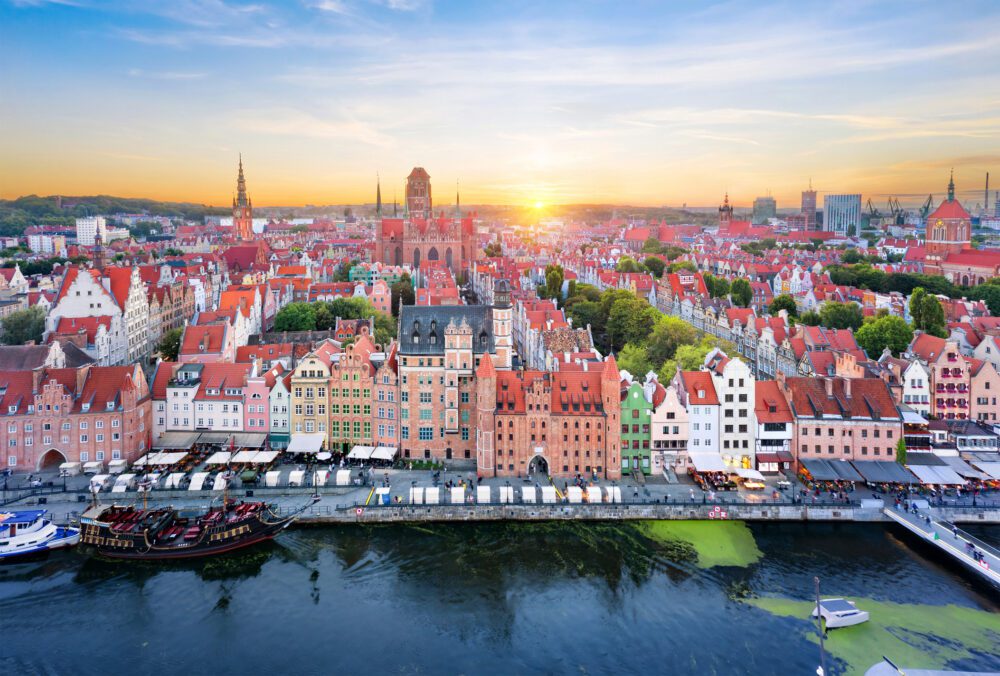
Introduction
Nestled along the Baltic coast, Gdansk is a city brimming with history, culture, and maritime charm. As one of Poland’s oldest and most picturesque cities, Gdansk boasts a rich tapestry of architectural marvels, cobbled streets, and bustling waterfronts that beckon travellers to explore its enchanting corners. With a history dating back over a thousand years, Gdansk has been shaped by centuries of trade, war, and cultural exchange, resulting in a vibrant cityscape that seamlessly blends the old with the new.
Gdansk’s storied past is reflected in its stunning Gothic and Renaissance architecture, charming Old Town, and iconic landmarks such as the Neptune Fountain and St. Mary’s Church. Beyond its historical allure, Gdansk offers a dynamic cultural scene, with bustling markets, lively festivals, and a burgeoning culinary scene that celebrates the region’s maritime heritage. Whether wandering through the narrow alleys of the Old Town, exploring the bustling port area, or soaking in the panoramic views from the city’s iconic crane, Gdansk promises an unforgettable journey filled with discovery and delight.
Table of Contents
Map of the Best Things to Do in Gdansk
Gdansk Old Town
Gdansk Old Town stands as a testament to the city’s rich history and architectural splendor. Stepping into this enchanting district feels like stepping back in time, with its labyrinth of narrow cobblestone streets, colorful merchant houses, and stunning medieval landmarks. The Old Town has witnessed centuries of tumultuous events, from the prosperity of its Hanseatic League days to the devastation of World War II and subsequent meticulous restoration efforts. One of the highlights is the iconic Neptune Fountain, a symbol of Gdansk’s maritime heritage, located in the picturesque Long Market square. Visitors can also admire the majestic St. Mary’s Church, one of the largest brick churches in the world, known for its breathtaking Gothic architecture and soaring spires.
Exploring Gdansk Old Town offers a plethora of experiences, from browsing charming artisanal shops and cosy cafes to immersing oneself in the city’s cultural heritage at its many museums and galleries. Visitors can take a leisurely stroll along the scenic Motlawa River embankment, lined with historic warehouses converted into trendy restaurants and bars. For panoramic views of the city, a climb up the Tower of St. Mary’s Church is a must. Additionally, guided walking tours are available for those eager to delve deeper into the history and legends that permeate the cobbled streets of this enchanting district.
Main Town Hall – Museum of Gdansk
The Old Town Hall stands as an iconic landmark in the heart of Gdansk’s historic Old Town, offering visitors a fascinating glimpse into the city’s past and present. Dating back to the 14th century, the Old Town Hall has been a symbol of civic pride and governance throughout the centuries. Its architectural style combines elements of Gothic and Renaissance design, reflecting the city’s rich cultural heritage. Today, the building houses the Museum of Gdansk, where visitors can explore exhibits showcasing the city’s history, art, and culture. From medieval artefacts to contemporary artworks, the museum offers a comprehensive overview of Gdansk’s evolution over the centuries.
Practical tips for visiting the Old Town Hall and Museum of Gdansk include checking the museum’s opening hours and admission fees in advance, as they may vary depending on exhibitions and events. Guided tours are available for those seeking a deeper understanding of the museum’s collections and the history of Gdansk. Don’t miss the opportunity to climb the tower of the Old Town Hall for panoramic views of the city and its picturesque surroundings.
Long Market (Dlugi Targ)
Long Market, or Długi Targ in Polish, is a historic thoroughfare located in the heart of Gdansk’s Old Town, renowned for its charming cobblestone streets and colourful facades. This bustling pedestrian street has been a focal point of trade and commerce since the Middle Ages, making it one of the city’s most vibrant and culturally significant areas. Lined with elegant townhouses, cafes, restaurants, and shops, Long Market exudes a lively atmosphere that attracts locals and tourists alike. At the centre of the market stands the iconic Neptune Fountain, a symbol of Gdansk’s maritime heritage, surrounded by ornate buildings that showcase the city’s architectural splendour.
Practical tips for exploring Long Market include taking your time to wander along its cobblestone streets, soaking in the historic ambience and admiring the intricate details of the buildings. Be sure to stop by the Neptune Fountain to snap photos and learn about its significance in Gdansk’s history. The market is also a great place to sample traditional Polish cuisine at the local restaurants and cafes, offering a taste of authentic flavours amidst a picturesque setting. Additionally, don’t forget to browse the shops for souvenirs and handmade crafts to take home as mementoes of your visit to Gdansk.
St. Mary’s Church
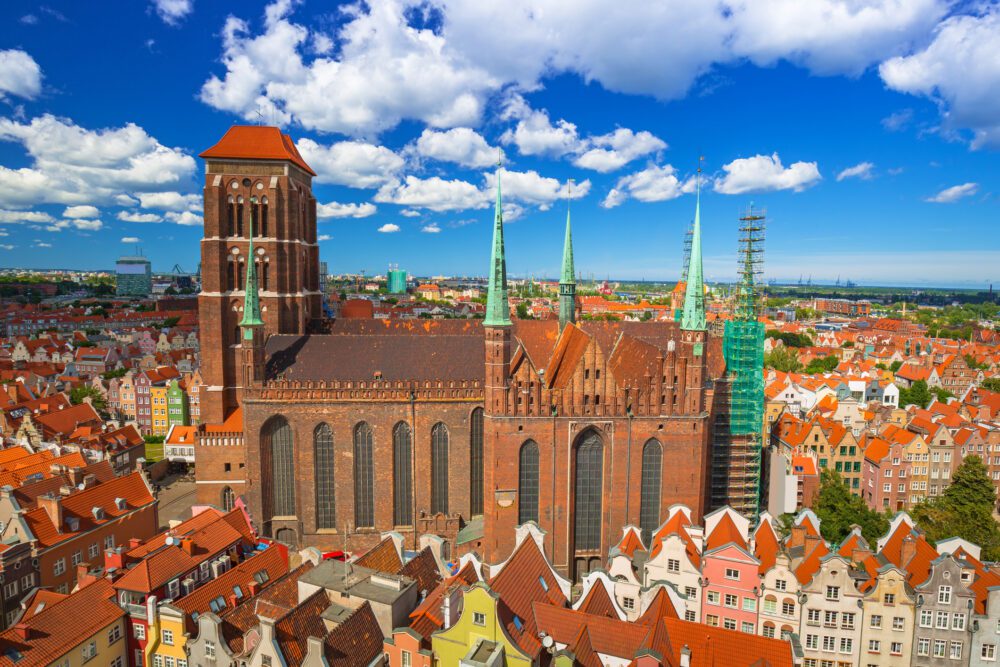
St. Mary’s Church, or Bazylika Mariacka in Polish, is a stunning Gothic masterpiece that dominates the skyline of Gdansk’s Old Town. With its towering spires reaching heights of over 80 meters, it is one of the largest brick churches in the world and a testament to the city’s rich architectural heritage. Construction of the church began in the 14th century and continued for several centuries, resulting in a blend of architectural styles, including Gothic, Renaissance, and Baroque elements. One of the highlights of St. Mary’s Church is its magnificent interior, featuring intricate vaulted ceilings, elaborate altars, and beautiful stained glass windows. Visitors can also climb the tower for panoramic views of Gdansk and the surrounding area.
Practical tips for visiting St. Mary’s Church include checking the opening hours and admission fees, as they may vary depending on the season. Guided tours are available for those who want to learn more about the church’s history and architecture, providing insights into its significance in Gdansk’s cultural and religious life. It’s also recommended to dress modestly when visiting religious sites out of respect for local customs. Additionally, consider timing your visit to coincide with one of the church’s organ concerts or religious services to experience its acoustics and ambience in a unique way. St. Mary’s Church is not only a magnificent architectural marvel but also a spiritual and cultural treasure that should not be missed during your time in Gdansk.
Mariacka Street
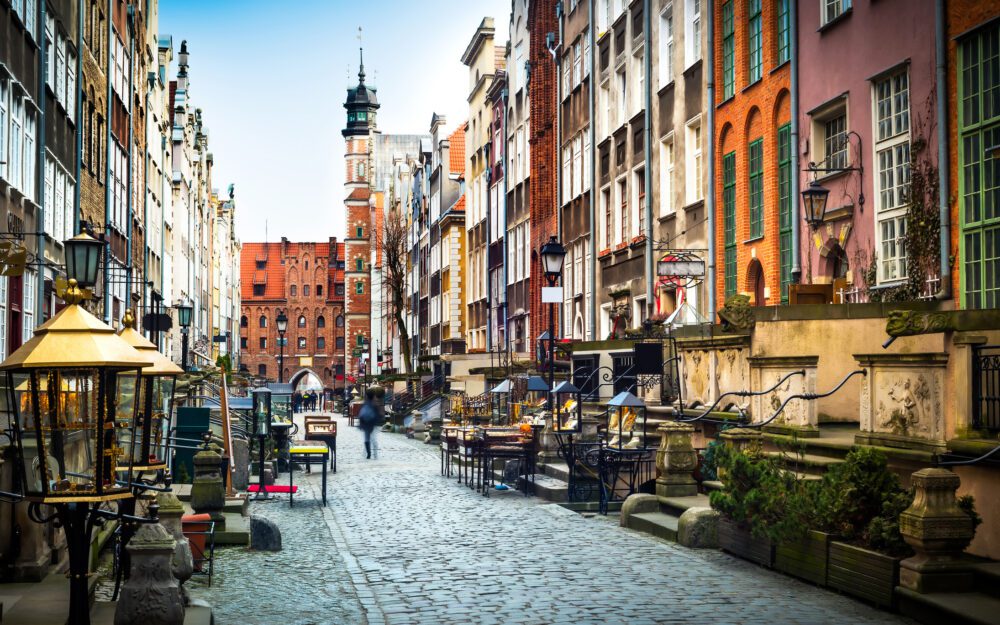
Mariacka Street is one of the most picturesque and charming streets in Gdansk, renowned for its beautifully restored facades, cobblestone pavement, and quaint artisan shops. Located in the heart of the Old Town, Mariacka Street has a rich history dating back to the Middle Ages when it was a bustling commercial hub lined with merchants’ houses and workshops. Today, it retains much of its historic charm, making it a popular destination for visitors seeking to explore Gdansk’s architectural heritage and artisanal traditions. One of the street’s most distinctive features is its iconic decorative facades adorned with intricate ornamentation, including colourful ceramic plaques, wrought-iron balconies, and sculpted figures.
Practical tips for exploring Mariacka Street include taking your time to wander along the cobblestone lanes and admire the architectural details of the buildings. The street is especially enchanting in the evening when the soft glow of lanterns illuminates the facades, creating a magical atmosphere. Visitors can browse through the various artisan shops and galleries, which offer a wide range of handcrafted items such as amber jewellery, pottery, and traditional handicrafts. It’s also worth stopping by one of the charming cafes or restaurants dotted along the street to enjoy a leisurely meal or coffee break while soaking in the ambience of this historic neighbourhood.
Motlawa River Embankment and Cruise
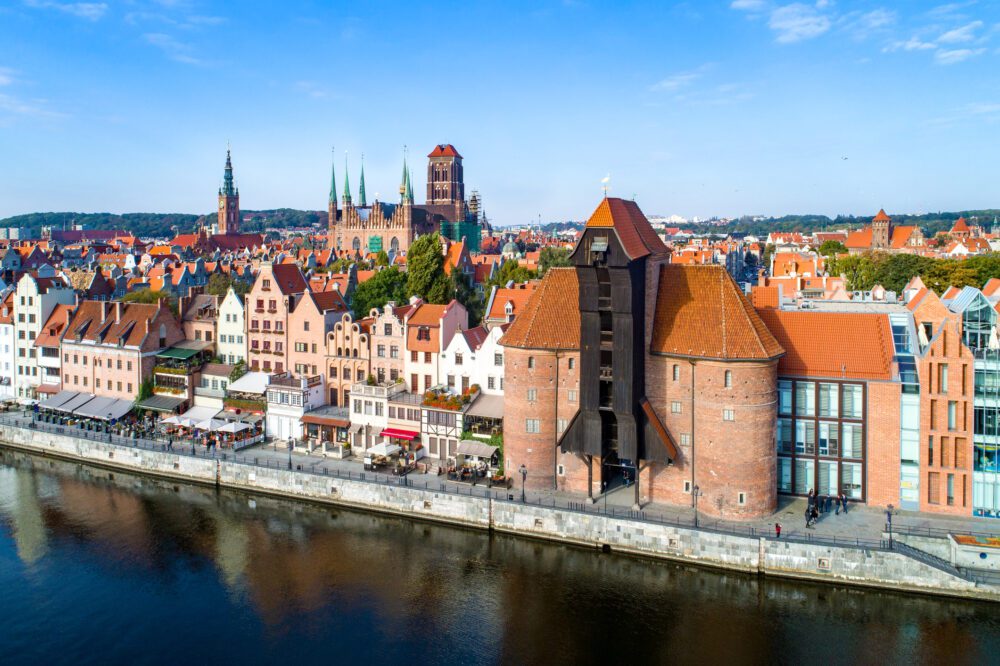
The Motlawa River Embankment is a picturesque waterfront promenade that winds its way along the banks of the Motlawa River, offering stunning views of Gdansk’s historic skyline. Lined with colourful merchant houses, charming cafes, and bustling outdoor terraces, the embankment is a popular spot for locals and tourists alike to stroll, relax, and soak in the vibrant atmosphere. The history of the Motlawa River Embankment is closely intertwined with Gdansk’s maritime heritage, as it served as a vital hub for trade and commerce during the city’s golden age as a major Baltic port. Today, visitors can still catch glimpses of the city’s seafaring past in the form of historic shipyards, maritime museums, and iconic landmarks such as the Crane, a medieval port crane that once symbolized Gdansk’s prosperity as a trading centre.
Practical tips for exploring the Motlawa River Embankment include taking a leisurely walk along the promenade to admire the architecture and enjoy the scenic views of the river and surrounding area. The embankment is particularly enchanting in the evening when the historic buildings are illuminated, casting a warm glow over the waterfront. Visitors can also take a boat tour along the Motlawa River to explore Gdansk from a different perspective and learn more about its maritime history. Additionally, the embankment is home to numerous cafes, restaurants, and bars where visitors can savour traditional Polish cuisine, enjoy a drink with a view, or simply relax and watch the world go by.
AmberSky
AmberSky, an iconic Ferris wheel located on the Motlawa River waterfront in Gdansk, offers visitors a unique perspective of the city’s historic skyline and surrounding landmarks. Standing at 50 meters tall, this modern attraction provides breathtaking panoramic views of Gdansk’s Old Town, the Motlawa River, and the Baltic Sea beyond. The history of AmberSky is relatively recent, as it was first erected in 2014 as part of Gdansk’s efforts to revitalize its waterfront and attract tourists to the area. Since then, it has become a beloved symbol of the city and a must-visit attraction for visitors looking to enjoy a bird’s-eye view of Gdansk’s picturesque surroundings.
Practical tips for visiting AmberSky include choosing the optimal time to ride the Ferris wheel to avoid long lines and crowded cabins. Sunset and evening rides are particularly popular, as they offer stunning views of the city illuminated against the twilight sky. Additionally, visitors can purchase tickets for individual rides or opt for special packages that include multiple rides or access to other nearby attractions. For those seeking an extra-special experience, private cabins can be booked for romantic occasions or intimate gatherings.
Gdansk Maritime Museum
The Gdansk Maritime Museum is a captivating destination for maritime enthusiasts and history buffs alike, offering a fascinating insight into the city’s rich maritime heritage. Housed within a historic granary building along the Motlawa River, the museum showcases a diverse collection of artefacts, exhibits, and interactive displays that highlight Gdansk’s seafaring past. Visitors can explore various aspects of maritime history, including shipbuilding, navigation, trade routes, and the lives of sailors and fishermen. One of the highlights of the museum is the collection of model ships, which range from intricately detailed replicas of historic vessels to modern maritime technology. Additionally, the museum often hosts temporary exhibitions and special events, providing visitors with new and exciting experiences with each visit.
Practical tips for visiting the Gdansk Maritime Museum include checking the museum’s opening hours and admission fees in advance, as they may vary depending on the season and any special exhibitions on display. Guided tours are available for those who wish to delve deeper into the museum’s collections and history, offering valuable insights and anecdotes from knowledgeable guides. Visitors should also take some time to explore the surrounding area along the Motlawa River, which is lined with historic buildings, cafes, and restaurants.
Amber Museum
The Amber Museum in Gdansk is a fascinating destination for those interested in the history and cultural significance of amber. Located in the historic heart of the city, the museum is housed in a beautifully restored medieval building, adding to its allure. The museum showcases a stunning collection of amber artefacts, ranging from ancient specimens to contemporary jewellery, providing visitors with an insight into the rich heritage of amber craftsmanship in the Baltic region. With informative exhibits, interactive displays, and expert guides, the Amber Museum offers a comprehensive look at the geological, cultural, and artistic aspects of amber, making it a must-visit attraction for anyone exploring Gdansk.
Practical tips for visiting the Amber Museum include checking the opening hours and admission fees in advance, as they may vary depending on the season. Visitors should also consider joining a guided tour to gain deeper insights into the exhibits and the history of amber. Additionally, the museum’s gift shop offers a wide selection of amber jewellery and souvenirs, making it a great place to pick up unique gifts or keepsakes.
Museum of the Second World War
The Museum of the Second World War in Gdansk stands as a poignant tribute to the tumultuous events of World War II and their profound impact on Poland and the world. Opened in 2017, the museum aims to present a comprehensive and nuanced perspective on the war, focusing not only on military conflicts but also on the experiences of civilians, the social dynamics of the time, and the broader global context. Its exhibits feature a vast collection of artefacts, documents, photographs, and multimedia installations that provide visitors with a deep understanding of the war’s causes, course, and consequences. Through immersive storytelling and interactive displays, the museum offers visitors a powerful and thought-provoking journey through one of the most significant chapters in human history.
Practical tips for visiting the Museum of the Second World War include planning ahead to allocate sufficient time for exploring its extensive exhibits thoroughly. Visitors may also benefit from utilizing audio guides or joining guided tours to gain additional insights into the museum’s collections and narratives. Additionally, it’s advisable to check the museum’s website for any special exhibitions, events, or temporary closures before planning your visit. Given the museum’s importance as a cultural and educational institution, visitors are encouraged to approach their experience with sensitivity and respect for the solemn subject matter it addresses.
European Solidarity Centre
The European Solidarity Centre in Gdansk serves as a testament to the power of solidarity and the triumph of human rights over oppression. Situated in the heart of the city, the centre commemorates the historical events of the Solidarity movement, which played a pivotal role in bringing an end to communist rule in Poland and inspiring similar movements across Eastern Europe. Opened in 2014, the European Solidarity Centre features immersive exhibitions, multimedia presentations, and archival materials that vividly depict the struggle for freedom and democracy during the late 20th century. Visitors can explore the centre’s thought-provoking displays, including reconstructions of key moments in the Solidarity movement, personal testimonies, and interactive installations that highlight the courage and resilience of those who fought for change.
Practical tips for visiting the European Solidarity Centre include allowing ample time to fully immerse oneself in the exhibits and multimedia presentations, as there is a wealth of information to absorb. Audio guides and guided tours are available for those seeking additional insights into the centre’s collections and the historical context of the Solidarity movement. Visitors may also want to check the centre’s schedule for any special events, lectures, or temporary exhibitions that may enhance their experience. As a symbol of Poland’s struggle for freedom and democracy, the European Solidarity Centre offers a profound and inspiring journey through one of the most significant chapters in modern European history,
Westerplatte
Westerplatte, located on a peninsula at the mouth of the Vistula River in Gdansk, holds immense historical significance as the site of the first battle of World War II. On September 1, 1939, German forces launched an assault on the Polish Military Transit Depot at Westerplatte, marking the beginning of the war in Europe. Despite being heavily outnumbered and outgunned, the Polish defenders, under the command of Major Henryk Sucharski, held out for seven days before finally surrendering. Today, Westerplatte stands as a powerful symbol of Polish resilience and resistance against Nazi aggression, with various monuments and memorials commemorating the bravery of those who fought and died defending the outpost.
Practical tips for visiting Westerplatte include taking a guided tour to gain a deeper understanding of the site’s historical significance and the events that unfolded there. Visitors can explore the remnants of the military barracks, observation towers, and bunkers that bear witness to the intense fighting that took place during the battle. Additionally, the Westerplatte Monument, erected in 1966, serves as a poignant tribute to the Polish defenders and features an eternal flame that burns in their memory.
St Nicholas Church
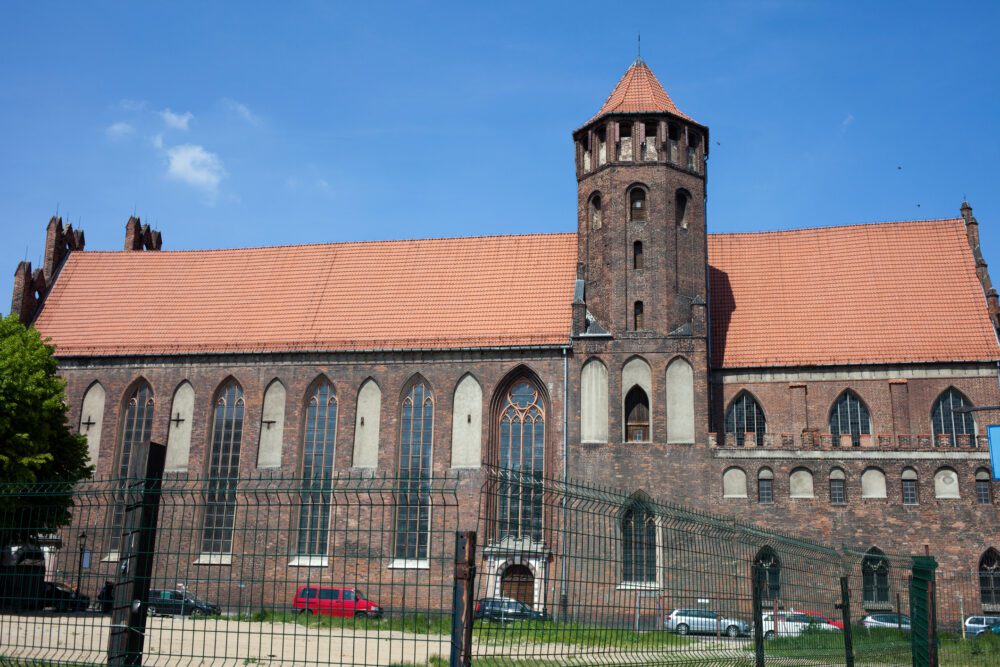
St. Nicholas Church, located in the heart of Gdansk’s Old Town, is a significant historical and architectural landmark. Dating back to the 13th century, the church has undergone several renovations and reconstructions over the centuries, blending various architectural styles such as Gothic, Baroque, and Renaissance. Its towering spire dominates the skyline of Gdansk and serves as a symbol of the city’s resilience and cultural heritage. Inside, visitors can admire impressive vaulted ceilings, intricate stained glass windows, and ornate altars adorned with religious artwork. The church also houses a museum showcasing artefacts and exhibits related to its history and significance in Gdansk’s cultural landscape.
Practical tips for visiting St. Nicholas Church include checking the opening hours and any admission fees, as they may vary depending on the time of year and whether there are any ongoing events or services. Guided tours are often available, providing visitors with in-depth insights into the church’s history and architecture. Additionally, climbing the tower offers panoramic views of Gdansk’s skyline and the surrounding area, making it a worthwhile experience for those who don’t mind stairs.
Oliwa Cathedral and Park
Oliwa Cathedral, officially known as the Archcathedral Basilica of the Holy Trinity, Blessed Virgin Mary, and St. Bernard, is a stunning example of Baroque architecture located in the Oliwa district of Gdansk. The cathedral traces its origins back to the 12th century when it was founded by Cistercian monks. Over the centuries, the cathedral underwent several renovations and expansions, culminating in its current grandeur. One of the highlights of Oliwa Cathedral is its magnificent organ, which dates back to the 18th century and is renowned for its exceptional sound quality and intricate design. The cathedral’s interior is adorned with beautiful frescoes, ornate altars, and intricately carved wooden furnishings, making it a feast for the eyes of visitors.
Practical tips for visiting Oliwa Cathedral include checking the schedule for organ concerts, which are held regularly and offer visitors a chance to experience the cathedral’s awe-inspiring acoustics firsthand. Guided tours are also available, providing insight into the history and significance of the cathedral and its artworks. Additionally, visitors should take the time to explore the adjacent Oliwa Park, a picturesque green space that surrounds the cathedral and features charming pathways, lush gardens, and tranquil ponds.
Jelitkowo Beach
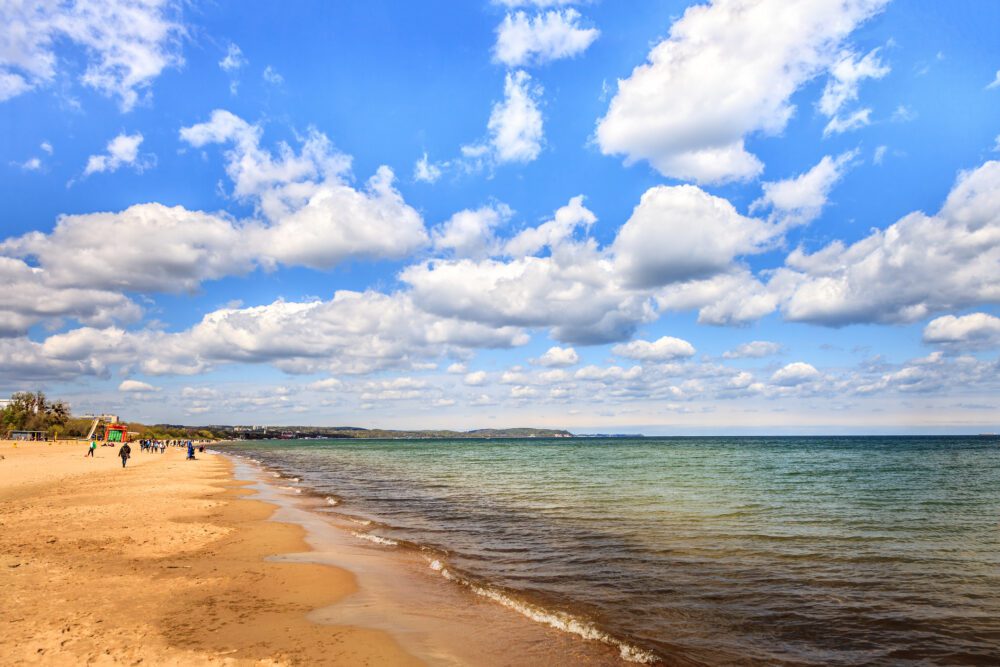
Jelitkowo Beach is one of the most popular and picturesque beaches in Gdansk, offering visitors a relaxing escape along the Baltic Sea coast. While the beach itself doesn’t have a long history, its development as a recreational area dates back to the 19th century when it became a favoured destination for locals and tourists alike. Today, Jelitkowo Beach is known for its golden sands, clear waters, and scenic views, making it an ideal spot for sunbathing, swimming, and enjoying water sports. The beach is also surrounded by amenities such as cafes, restaurants, and rental shops, providing visitors with everything they need for a day of seaside relaxation.
Practical tips for visiting Jelitkowo Beach include bringing along essentials such as sunscreen, towels, and beach umbrellas, as well as snacks and drinks to stay refreshed throughout the day. Visitors should also be mindful of the weather conditions and the Baltic Sea’s sometimes chilly waters, especially if they plan on swimming or participating in water activities. Additionally, Jelitkowo Beach is easily accessible from the Gdansk city centre by public transportation or car, and there are ample parking facilities available nearby.
Conclusion
Exploring the enchanting city of Gdansk offers visitors a rich tapestry of history, culture, and architectural wonders. From the picturesque Old Town with its charming cobblestone streets to the majestic St. Mary’s Church and the poignant reminders of the city’s past at Westerplatte, Gdansk is a destination that captivates the imagination and leaves a lasting impression. The city’s maritime heritage, vibrant arts scene, and delectable culinary offerings further add to its allure, ensuring that there is something for every traveler to enjoy.
Gdansk stands as a testament to resilience, creativity, and the enduring spirit of its people. Whether you’re strolling along the Motlawa River Embankment, soaking in the views from AmberSky, or delving into the depths of history at the Museum of the Second World War, each experience offers a glimpse into the city’s storied past and vibrant present. With its wealth of attractions and warm hospitality, Gdansk invites visitors to embark on a memorable journey filled with discovery and wonder.
